Ford Escape Vs Ford Edge Comparison: Which Crossover is Right for You?

Two strong sellers for the Blue Oval, the Ford Escape and Edge often make up a significant portion of dealership volume.
For this latest generation, the smaller Escape has lost some of its chunky and squared-off charm in favor of more rounded bodywork. After receiving a boatload of changes in 2019, the latest Edge also includes a huge 12.0-inch, portrait-orientation touchscreen front and center inside.
Get a Quote on a New Ford Escape or EdgeBoth are two-row, five-passenger vehicles offering a choice of powertrains and optional all-wheel drive. Read on to see which one best fits your needs.
Powertrains
Escape: There are no shortage of powertrain options in the fresher Escape. The ute makes an opening bid with its 1.5-liter turbocharged three-cylinder making 180 hp and available with front- or all-wheel drive. A boosted 2.0-liter mill produces a healthy 250 ponies and sends power to all four wheels. Hybrid models deploy a 2.5-liter inline-four that, paired with electric propulsion, makes about 200 horsepower. The plug-in hybrid model makes slightly more juice thanks to a more robust pack of electrons, but sticks to front-drive only.
SEE ALSO: 2019 Ford Edge ST Review
Edge: All Edge models—except the sporty ST—are powered by a turbocharged 2.0-liter four-banger making 250 horsepower and 275 lb-ft of torque. Front-wheel drive is standard on non-STs, with all-wheel drive showing up as an option. The zooty ST comes with all-wheel drive as standard equipment and earns a 2.7-liter turbocharged V6, good for 335 ponies and 380 units of twist. Every Edge gets an eight-speed automatic transmission.
Bottom Line: In the Escape, Ford’s 250hp turbo four is a fine choice but is blunted by Edge’s extra weight. If it’s in budget, pop for the ST.
Fuel Economy
Escape: The front-wheel drive 1.5-liter Escape is estimated to get 34 mpg in highway driving and 28 mpg on a city cycle. Combined, that should make for an even 30 mpg. Adding AWD dings city by 2 and highway by 3, dropping the average to 28 mpg. Opt for the 2.0-liter AWD and the city rating drops further to just 23 mpg, though highway remains at 31 mpg—that’s an average of 26 mpg.
Switch it up to front-drive hybrid power and you’re looking at 44/37/41 mpg for city, highway, and combined, respectively. Adding AWD barely changes things, with the EPA estimating 43/37/40 mpg, respectively.
SEE ALSO: 2020 Ford Escape Hybrid Review: Friendly Fuel-SipperEdge: Ford reckons front-wheel drive versions of this trucklet should return 21 mpg around town and 29 mpg on the highway. Combined, expect to see somewhere in the neighborhood of 24 mpg. Adding all-wheel drive drops each of these numbers by a single mpg, save for the city rating which remains the same. It should be noted that the power numbers listed at the beginning of this post are achieved with expensive 93 octane fuel. Oddly, all-wheel versions of the Edge have a slightly larger fuel tank despite the presence of more powertrain gear. The sporty ST scores 19/25/21 mpg, respectively.
Bottom Line: A lighter weight and smaller footprint make Escape the fuel economy champ here.
Technology
Escape: The Escape comes standard with Ford Co-Pilot360 and makes available Ford Co-Pilot360 Assist features such as adaptive cruise control with stop-and-go and lane-centering. An available 8.0-inch touch screen shares information with the available 12.3-inch all-digital instrument cluster, dragging Escape firmly into the modern era of infotainment. CarPlay is onboard, along with neato features like Ford+Alexa and Waze navigation.
SEE ALSO: Ford Escape vs Ford EcoSport Comparison
Edge: Every two-row Edge is equipped with Ford Co-Pilot360, a network of cameras and sensors which can warn of impending doom and attempt to keep drivers from making roadkill out of roadside nature. Evasive steering assist is available on SEL and standard on the top two trims; it’s the same story with adaptive cruise control, which features stop-and-go and lane centering. The big 12.0-inch infotainment screen, similar to the item in the Explorer and the new Mustang Mach-E, offers a lot of digital real estate.
Bottom Line: As a newer clean sheet design, Escape holds an edge over Edge in the tech department, though the big central screen is a USP for the Edge.
Cabin Space
Escape: First-row headroom is equal across the board at a too-perfect 40 inches even. This barely changes for backseat passengers who enjoy 39.3 inches for their noggins. Legroom is listed at 42.4 inches in front and 40.7 inches rear when the seats are moved to their furthest-most positions.
Edge: Absent a third row, Edge can seat five people. Front row chairs offer 42.6 inches of legroom and 40.2 inches of headroom. Adding a sunroof shaves a shocking 2.5 inches from that latter figure, so make sure to try before you buy. In a twist, headroom actually increases by a couple of tenths in the second row while offering 40.6 inches of space for legs. Total passenger volume is 113.9 cubic feet.
SEE ALSO: 2020 Ford Escape vs 2019 Mazda CX-5 Comparison
Bottom Line: These two vastly different machines somehow offer similar leg- and headroom numbers despite putting down dissimilar footprints. Edge’s extra width pays dividends, however, so all hands may be more comfortable in the bigger car despite its on-paper dimensions.
Style
Escape: New for 2020, the Escape continues its march toward the softer side of crossover and SUV styling, trading some its creases for rounded edges. It certainly looks nothing like the original Escapes with their boxy and rigged profiles. Filling that end of the spectrum will be the Bronco Sport.
Edge: This nameplate has been around for over ten years now and, throughout that tenure, has always tended to look like a rounded-off dinner roll. Model year 2020 is no different, with Edge continuing to be one of the best-looking vehicles in its segment. Snazzy ST version earn special trim and bodywork to let the other parents know you’re wearing Piloti shoes while dropping the kids off at soccer.
SEE ALSO: The Best Racing and Driving Shoes
Bottom Line: Edge has an advantage here, given the too-soft restyle of Escape that will appeal to some—but not all—buyers.
Cargo Capacity
Escape: Thanks to adjustable seating, Ford chooses to list a pair of dimensions for the rear cargo area in its 2020 Escape. The so-called “optimized” cargo volume measures 33.5 cubes while sliding all chairs as far forward as possible adds an extra four cubes. Hybrid models suffer slightly in the cargo department thanks to their extra propulsion gear, with the cargo area measuring 30.7 and 34.4 cubic feet in “optimized” and maximum measures, respectively.
Edge: Not having to house a third row of passengers works to Edge’s advantage, as a generous 39.2 cubic feet of space exists for cargo behind the second-row bench. Flipping that seat flat opens up a cavernous 73.4 cubic feet of room. Liftover height, the vertical measure from the ground to a car’s cargo floor, is about thirty inches.
Bottom Line: There’s no arguing physics and geometry, as the Edge can clearly hold more cargo simply because it’s a larger box.
Pricing
Escape: Fresh off a redesign, it has a starting MSRP of $26,130 (including $1,245 in destination). All-wheel drive is a $1,500 option at this level. It must be noted that Ford should be commended for offering AWD on the base trim, something not done by all manufacturers. Hybrid versions begin their pricing at a reasonable $29,420. High zoot gas-powered Titanium models knock on the door of $40,000 once all options are selected
Edge: In the US, Edge starts at $32,3455 for an entry-level SE model that no one buys. Volume-leader SEL trim is $35,600 while that hi-po ST you really want is a heady $44,510. Adding all-wheel drive tacks $1,995 to the bill and there are plenty of convenience packages to pad the total as well. In a fit of corporate responsibility, Ford doesn’t limit the high-tech safety kit like adaptive cruise control with stop-and-go braking to just top models; it is available as a stand-alone option for $795.
Bottom Line: Restraint should be exercised with the options list on both Edge and Escape, as wanton checking of feature boxes will drive the price of either vehicle far beyond its real-world value. Sticking to a well-equipped mid-grade trim is the smart play.
Verdict: Ford Escape vs Ford Edge Comparison
Blue Oval fans will find a lot to like in both these machines, as they are infused with easily recognizable Ford DNA throughout. They are smartly packaged two-row trucklets and have the ability to carry people or cargo with ease. Selecting all-wheel drive will likely help with residual value at trade in time. If Ford’s latest and greatest tech is on your list, sample the Escape. Those with extra cargo or passenger demands should check out the Edge.

Living in rural Canada, Matthew has immersed himself in car culture for over 30 years and relishes the thought of a good road trip. A certified gearhead, he enjoys sharing his excitement about cars and is very pleased to contribute at AutoGuide. Matthew is a member of Automotive Journalists Association of Canada (AJAC).
More by Matthew Guy



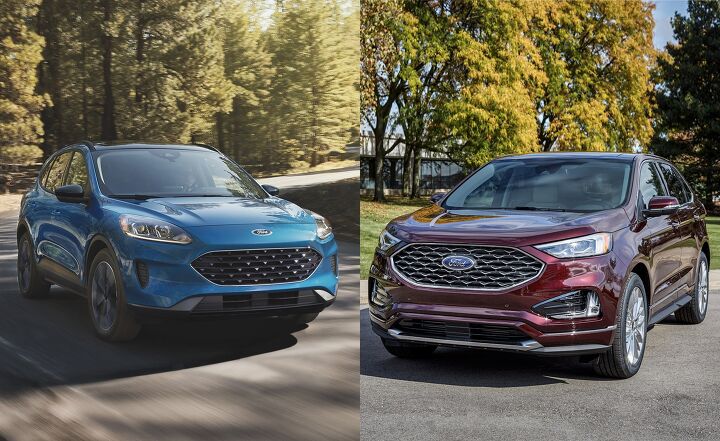



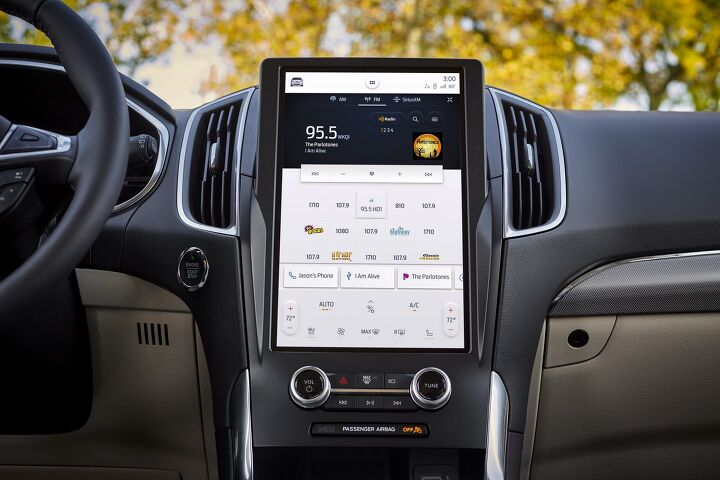



















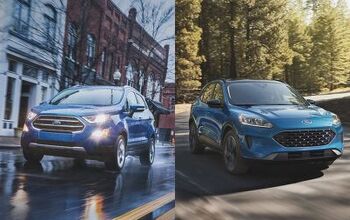






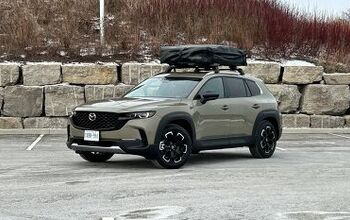



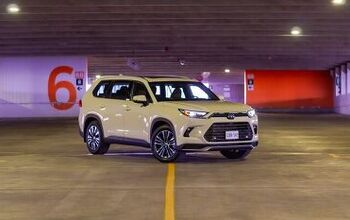


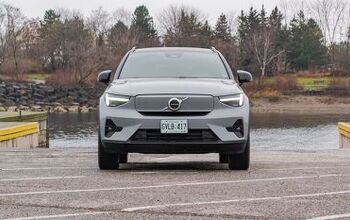
Comments
Join the conversation
Good